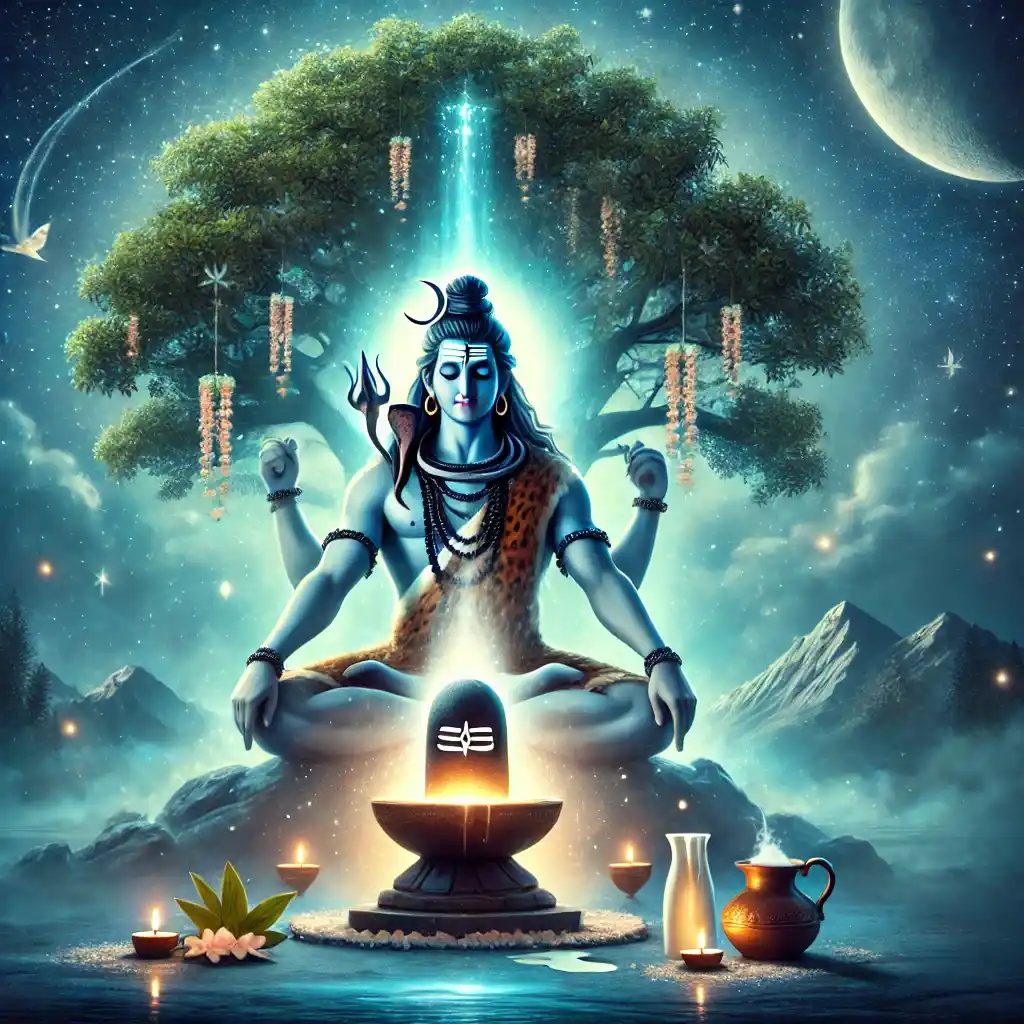
Spiritual Guidance and Inspiration
Maha Shivratri
The Great Night of Lord Shiva
Maha Shivratri, translating to "The Great Night of Shiva," is one of the most sacred festivals in Hinduism. Dedicated to Lord Shiva, the deity of destruction and transformation, this festival is observed annually by millions of devotees across the world. Unlike other Hindu festivals marked by joyous celebrations and feasts, Maha Shivratri is a solemn occasion focused on fasting, meditation, and spiritual awakening.
The festival holds deep spiritual significance, symbolizing the triumph of light over darkness, knowledge over ignorance, and devotion over materialism. It is believed that observing Maha Shivratri with sincerity and devotion brings divine blessings, spiritual enlightenment, and liberation from past sins.
The Significance of Maha Shivratri
Maha Shivratri is not just a religious event but a deeply philosophical and spiritual occasion. The night is dedicated to self-reflection, inner purification, and transcendence beyond worldly attachments. The symbolism behind the festival can be understood from multiple perspectives:
Cosmic Balance: Lord Shiva represents the cosmic balance of destruction and regeneration. His dance, the Tandava, signifies the perpetual cycle of creation, preservation, and dissolution.
Overcoming Darkness: Just as Shiva consumed the deadly poison (halahala) during the Samudra Manthan (churning of the ocean), Maha Shivratri teaches devotees to conquer their inner darkness, fears, and negative tendencies.
Marriage of Shiva and Parvati: This night is also believed to mark the celestial wedding of Lord Shiva and Goddess Parvati, symbolizing the harmonious union of masculine (Shiva) and feminine (Shakti) energies in the universe.
Attaining Moksha (Liberation): Devotees believe that worshipping Lord Shiva on this night helps in breaking the cycle of birth and rebirth, leading to ultimate liberation (moksha).
Legends and Mythological Stories Associated with Maha Shivratri
Several fascinating legends are associated with Maha Shivratri, each adding a different dimension to its significance:
The Night of the Cosmic Dance (Shiva Tandava): One of the most popular legends states that on this night, Lord Shiva performed the divine cosmic dance, known as the Tandava, which represents the eternal rhythm of the universe. His dance is said to depict the dynamic balance between destruction and creation, signifying the ever-changing nature of existence.
The Marriage of Shiva and Parvati: According to Hindu mythology, Maha Shivratri marks the divine wedding of Lord Shiva and Goddess Parvati. It is believed that Parvati performed intense penance to win Shiva's heart, and on this auspicious night, they were united in holy matrimony. This legend symbolizes the merging of two cosmic forces—Shiva (pure consciousness) and Shakti (energy), which together sustain the universe.
Shiva as Neelkanth (The Blue-Throated Deity): During the churning of the ocean (Samudra Manthan), the gods (Devas) and demons (Asuras) came across a deadly poison called Halahala, which threatened to destroy the universe. To save all beings, Lord Shiva drank the poison and held it in his throat, turning it blue. This earned him the name Neelkanth (the Blue-Throated One). Maha Shivratri is observed in reverence of Shiva’s supreme act of self-sacrifice.
The Hunter and the Shiva Linga: Another popular legend tells the story of a hunter who unknowingly worshipped Lord Shiva while waiting for prey near a Bilva (Bael) tree. Throughout the night, he dropped Bilva leaves on a Shiva Linga beneath the tree. Pleased with his devotion, Lord Shiva blessed him with salvation. This story emphasizes that even unconscious acts of devotion can bring divine blessings.
Rituals and Observances of Maha Shivratri
The observance of Maha Shivratri involves various rituals, each with profound spiritual significance. Devotees engage in these practices to seek the divine blessings of Lord Shiva:
Fasting (Upvas): Fasting is a crucial part of Maha Shivratri. Many devotees observe a full-day fast, abstaining from food and even water in some cases. Those who cannot undertake a strict fast consume fruits, milk, and specific fasting-friendly foods. The fast signifies self-discipline, purification of the body, and mental resilience.
Night Vigil and Worship (Jagaran): Devotees stay awake the entire night, singing hymns, reciting Shiva Chalisa, and chanting Om Namah Shivaya, the sacred mantra dedicated to Lord Shiva. The night-long vigil symbolizes conquering ignorance and awakening the inner consciousness.
Ritual Bathing of Shiva Linga (Abhishekam): One of the most significant rituals of Maha Shivratri is the Abhishekam, where devotees bathe the Shiva Linga with sacred offerings such as - Milk (symbolizing purity), Honey (representing sweetness in life), Ghee (clarified butter) (symbolizing nourishment), Water from the Ganges (representing divine energy), Bilva leaves (believed to be Lord Shiva’s favorite).
Chanting and Meditation: Devotees engage in meditation and spiritual chanting throughout the night. The vibrations produced by chanting Om Namah Shivaya are believed to cleanse the mind, enhance concentration, and align the devotee with cosmic energy.
Visiting Temples: Many devotees visit temples dedicated to Lord Shiva, offering prayers and performing special rituals. Major temples such as Kashi Vishwanath (Varanasi), Mahakaleshwar (Ujjain), Somnath (Gujarat), and Kedarnath (Himalayas) witness an influx of pilgrims seeking divine blessings.
How Maha Shivratri is Celebrated Across India
Maha Shivratri is celebrated with grandeur in different parts of India, each region adding its unique traditions to the festival:
Mandi, Himachal Pradesh: The Mandi Shivratri Fair is a grand week-long celebration where deities from neighboring temples are brought in procession.
Ujjain, Madhya Pradesh: Home to the Mahakaleshwar Jyotirlinga, the city sees thousands of devotees participating in special midnight prayers.
Varanasi, Uttar Pradesh: The ghats and temples of Varanasi come alive with chants, diyas, and religious fervor.
Pashupatinath, Nepal: One of the biggest Maha Shivratri celebrations takes place at the Pashupatinath Temple in Kathmandu, where thousands of devotees gather to offer prayers.
Conclusion
Maha Shivratri is a festival that goes beyond religious rituals—it is a night of deep introspection, spiritual awakening, and divine connection. By observing the rituals with devotion, one can attain self-purification, inner peace, and the ultimate goal of life—moksha (liberation). Whether one is a follower of Hinduism or not, the profound wisdom behind Maha Shivratri’s observances offers valuable insights into leading a balanced, conscious, and enlightened life.
Let us celebrate this Maha Shivratri with faith, devotion, and a commitment to self-improvement. May Lord Shiva’s blessings bring peace, prosperity, and spiritual fulfillment to all! Om Namah Shivaya!

Explore the latest and most popular products available on Amazon, handpicked for your convenience! Whether you're shopping for tech gadgets, home essentials, fashion items, or something special, simply click the button below to view the product on Amazon. We’ve partnered with Amazon through their affiliate program, which means that if you make a purchase through this link, we may earn a small commission at no extra cost to you. This helps support our site and allows us to continue providing valuable content. Thank you for your support, and happy shopping!